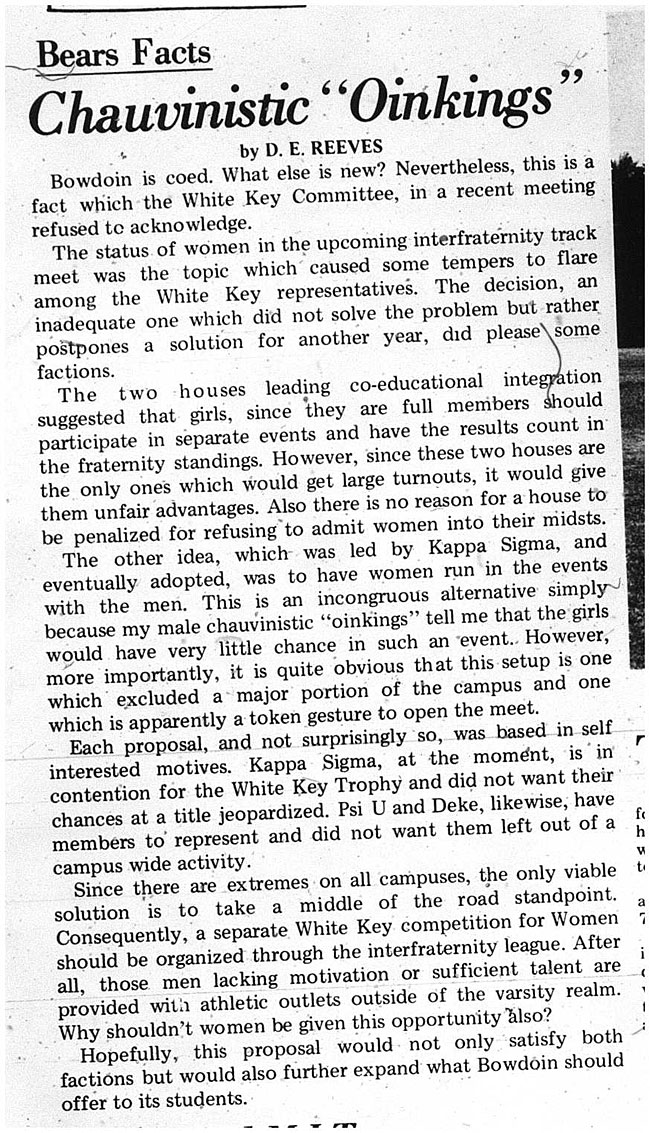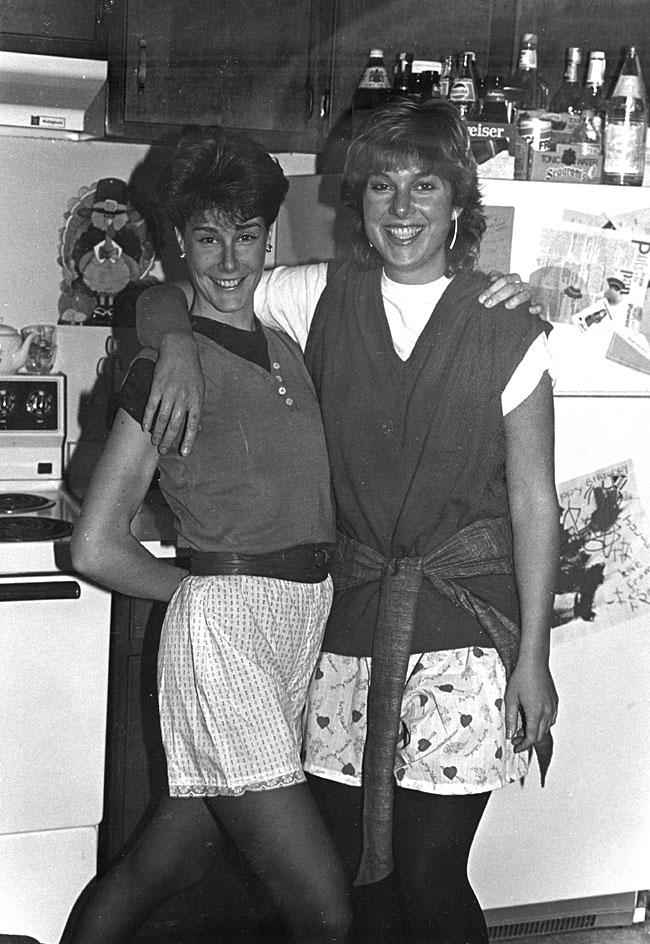In the years following coeducation, the presence of women students raised many unanticipated questions for the College. These ranged greatly in scale, from large issues, like gynecological health and coeducational fraternities, to much more quotidian matters, like intramural sports.
This Orient editorial, which appeared in the April 27, 1973 edition (Document AW, 48), illuminates some of the unexpected complications that accompanied coeducation—specifically, the implications of coeducational fraternities on interfraternity athletic competitions. Having women on a fraternity’s track team, it argues, gives an unfair advantage to the coeducational fraternities; however, not allowing women means an unfair disadvantage. The author suggests that a separate White Key competition should be established for women, just as there are less competitive leagues for male athletes who do not have varsity-level skills.
Although the tone of the article is light—its title comes from a tongue-in-cheek joke—it does bring up some of the questions that coeducation raised for the Greek system, besides the obvious ones of membership and housing. As trustee Ellen Schuman ’76 said, Bowdoin’s administration “in some ways they had no idea what they were doing” when they began the process of coeducation, and often, issues were confronted and solved on an ad hoc basis (Trustee Focus Group, 3:20-3:54).

